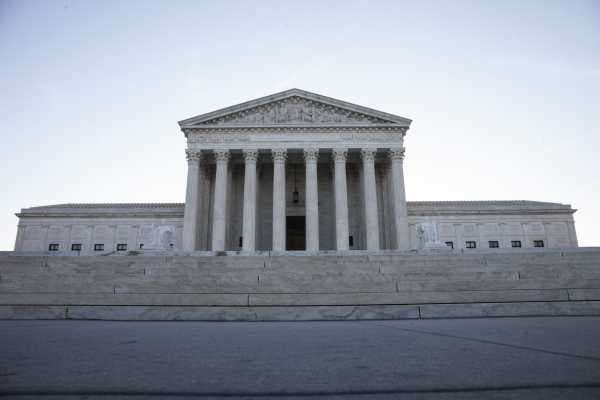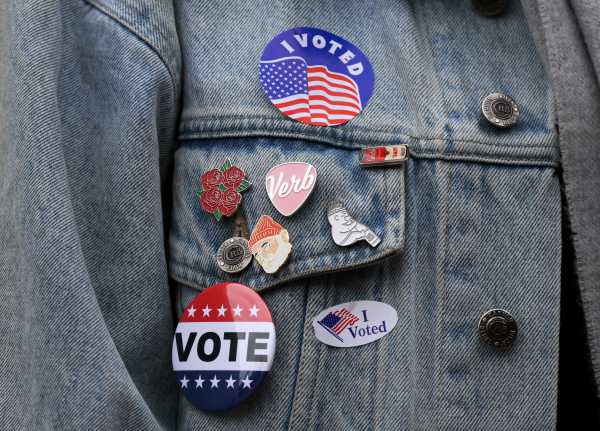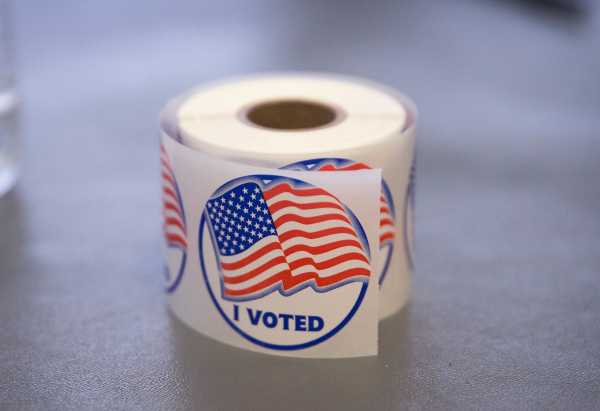
The US Supreme Court on Monday upheld Ohio’s system for purging voters from the rolls.
The Court split 5-4 along partisan lines, with the five conservative-leaning justices, in a majority opinion by Justice Samuel Alito, upholding the system and the four liberal-leaning justices opposing it. The ruling focused in large part on technical interpretations of federal voting laws, although the argument underlying Ohio’s system is, in fact, a much bigger one about voter suppression.
Ohio’s system uses a multi-step method to remove voters from the rolls: First, it waits for someone to not vote for two years. Then, it mails them a prepaid return card to make sure the would-be voter still lives in the same address. If the state does not get the card back and the person does not vote in any election for four more years, the state assumes the person has moved and removes the person’s voter registration from the rolls, citing a change of residence.
Opponents of the system argue that it violates the federal National Voter Registration Act and Help America Vote Act of 2002, which restrict a state from removing someone from the rolls just because the person failed to vote. Opponents also claim that the system is unreasonable, in part because many people who received the return cards simply threw them away without responding — not because they no longer live at the residences, but because they may not have known what the cards were for.
The Supreme Court’s Husted v. A Philip Randolph Institute ruling concluded, however, that Ohio’s voter purge system did not violate federal laws. The Court found that Ohio’s system uses a lack of voting as just one piece of evidence, along with the lack of response to the prepaid return card, to trigger a person’s removal from the rolls. Since a person not voting is not the sole basis for removal from the rolls, the Court said, it’s legal under federal law.
The Court also said that the system is, legally, reasonable. “Ohio’s process cannot be unreasonable because it uses the change-of-residence evidence that Congress said it could: the failure to send back a notice coupled with the failure to vote for the requisite period. Ohio’s process is accordingly lawful,” the Court found.
While much of the ruling focuses on how to read and interpret federal law, the broader public debate is about whether Ohio’s system is yet another attempt to suppress voters.
Over the past several years, Republican-controlled state governments have taken steps to make voting harder — moves that, Democrats and civil rights activists argue, have made it more difficult for minority and Democratic voters in particular to cast their ballots.
Republicans counter that they are trying to prevent voter fraud. Ohio, led by Republican Secretary of State Jon Husted, has echoed this argument — claiming that not clearing its voter rolls would make it easier for someone to cast a fraudulent ballot. Husted, for one, has repeatedly said that the state’s goal is to “make it easy to vote and hard to cheat.”
According to NBC News, “At least a dozen other politically conservative states said they would adopt a similar practice if Ohio prevailed, as a way of keeping their voter registration lists accurate and up to date.”
With the Supreme Court’s approval, Ohio is now able to purge potentially thousands of voters from its rolls. The reality, though, is that voter fraud of the kind Ohio is so worried about is extremely rare.
The research is clear: voter fraud is rare to nonexistent
There have been multiple investigations — by academics, journalists, and nonpartisan think tanks — into voter fraud. None have found evidence of widespread fraud or anything close to it.
Loyola Law School professor Justin Levitt studied voter impersonation, the major type of fraud that strict voter ID laws and voter purges in part aim to curtail. Levitt found 35 total credible accusations between 2000 and 2014, constituting a few hundred ballots at most. During this 15-year period, more than 800 million ballots were cast in national general elections and hundreds of millions more were cast in primary, municipal, special, and other elections.
A 2012 investigation by the News21 journalism project looked at all kinds of voter fraud nationwide, including voter impersonation, people voting twice, vote buying, absentee fraud, and voter intimidation. It confirmed that voter impersonation was extremely rare, with just 10 credible cases.
But the other types of fraud weren’t common either: In total, the project uncovered 2,068 alleged election fraud cases from 2000 through part of 2012, covering a time span when more than 620 million votes were cast in national general elections alone. That represents about 0.000003 alleged cases of fraud for every vote cast, and 344 fraud cases per national general election, in each of which between 80 million and 135 million people voted. The number of fraudulent votes was a drop in the bucket.
What’s more, not all — maybe not even half — of these alleged fraud cases were credible, News21 found: “Of reported election-fraud allegations in the database whose resolution could be determined, 46 percent resulted in acquittals, dropped charges or decisions not to bring charges.”
Another, more recent investigation in North Carolina by the State Board of Elections similarly found just one — out of nearly 4.8 million total votes in 2016 — credible case of in-person voter fraud. That amounts to just 0.00002 percent of all votes. Other types of fraud were very rare as well: Although there were more than 500 ineligible votes, the State Board of Election found that almost all of these were due to people negligently voting when they genuinely thought they were allowed to vote but legally weren’t. It was simply not the case that there were a lot of people trying to rig the election.
The voter fraud myth has been used repeatedly to make it harder to vote
Ohio’s efforts are part of a broader Republican agenda to make it more difficult to vote.
President Donald Trump has joined in these efforts, setting up a commission to study voter fraud — a commission that was mired by so much controversy and opposition from states that it subsequently shut down without doing anything of significance.
But Trump and Husted, Ohio’s secretary of state, are far from the only Republicans to take part in efforts to restrict voting.
In 2008, many Republicans and conservative media outlets like Fox News promoted fears that ACORN, a community organization that focused in part on registering African-American voters, was engaging in mass-scale election fraud. At the time, Republican nominee John McCain warned that ACORN “is now on the verge of maybe perpetrating one of the greatest frauds in voter history in this country, maybe destroying the fabric of democracy.” (Again, there was zero evidence of this, and it did not happen.)
And the myth that undocumented immigrants in particular are voting illegally has been promoted for years by right-wing conspiracy websites like Infowars — citing a highly criticized 2014 report, even though one of its authors has said it didn’t find proof of widespread voter fraud.
Touting these kinds of concerns, 23 states have enacted new voting restrictions — from strict photo ID requirements to new limits on early voting — since the end of 2010, according to the Brennan Center for Justice.

Republican leaders have also embraced other tactics that limit people’s ability to vote, including purging voter rolls, going after voter registration groups, and closing down polling places. These efforts were all emboldened by a separate Supreme Court ruling from 2013 that weakened the Voting Rights Act, which banned discrimination at the voting booth, by limiting federal oversight of changes certain states make to their voting laws.
States’ measures typically target voter impersonation. They require a certain kind of ID to vote; Texas, for example, allows government-issued IDs (including concealed gun permits) but not student IDs. This, obviously, makes it much harder for someone to impersonate another voter, although it can also make it much harder for someone to vote if they don’t have the time or resources to obtain a proper ID.
But states’ voting restrictions can also take other steps that don’t seem to target fraud so much as make voting more difficult. North Carolina’s law, for example, also eliminated some early voting days, ended same-day voter registration and out-of-precinct voting, and stopped the preregistration of 16- and 17-year-olds in the state. (North Carolina’s law was ultimately struck down by courts.)
Republicans, who tend to push for these laws at the state level, nonetheless insist that their goal is to limit voter fraud. And for years, they have echoed rhetoric like McCain’s and Trump’s to convince people that voter fraud really is a big problem that requires burdensome laws to fix.
A previous report by the US Department of Justice captured the sentiment among many Republicans: Rep. Sue Burmeister, a lead sponsor of Georgia’s voter restriction law, told the Justice Department that “if there are fewer black voters because of this bill, it will only be because there is less opportunity for fraud. [Burmeister] said that when black voters in her black precincts are not paid to vote, they do not go to the polls.” Other Republicans, such as former North Carolina Gov. Pat McCrory and Iowa Rep. Steve King, have similarly warned about the dangers of voter fraud.
Voter fraud fears can lead to racist consequences
Republican-backed voting restrictions don’t affect everyone equally. Time and time again, the evidence has shown that they tend to keep eligible minority voters in particular from casting a ballot — and Republicans have at times admitted that this was their intent.
Some studies suggest voter ID laws make it particularly harder for black and brown Americans to vote. One widely cited 2006 study by the Brennan Center found voter ID laws, for instance, disproportionately impacted eligible black voters: 25 percent of black voting-age citizens did not have a government-issued photo ID, compared with 8 percent of white voting-age citizens. And a study for the Black Youth Project, which analyzed 2012 voting data for people ages 18 to 29, found 72.9 percent of young black voters and 60.8 percent of young Hispanic voters were asked for IDs to vote, compared with 50.8 percent of young white voters.
One reason for these kinds of numbers is disparate enforcement — polling officials, perhaps driven by racial biases, appear more likely to ask minority voters for an ID.

But minority voters are also generally hit harder by voter ID laws and other restrictions on voting. For example, since minority Americans are less likely to have flexible work hours or own cars, they might have a harder time affording a voter ID or getting to the right place (typically a DMV or BMV office) to obtain a voter ID, rely more on early voting opportunities to cast a ballot, or require a nearby voting place instead of one that’s a drive, instead of a walk, away from home or work.
Critics of Ohio’s voter purge system claim that it also disproportionately hits low-income and minority communities, because they’re less likely to have home security as well as the job and time flexibility required to return the state’s card. Arturo Vargas, executive director of National Association of Latino Elected and Appointed Officials, argued that Ohio’s voter purge system creates language barriers that disproportionately hit Latinx voters too:
Justice Sonia Sotomayor, in one of the Supreme Court’s dissenting opinions, agreed. “As one example, amici point to an investigation that revealed that in Hamilton County, ‘African-American-majority neighborhoods in downtown Cincinnati had 10% of their voters removed due to inactivity’ since 2012, as ‘compared to only 4% of voters in a suburban, majority-white neighborhood,’” Sotomayor wrote, citing a brief from the NAACP.
For civil rights groups, the new restrictions and efforts call back to the days of poll taxes, literacy tests, and other rules that were imposed to block minorities from voting until the Voting Rights Act effectively banned such laws. Like modern voting restrictions, the old laws didn’t appear to racially discriminate at face value. But due to selective enforcement and socioeconomic disparities, they disproportionately kept out black voters.
Minority voters tend to lean Democratic. So Republicans are also effectively making it harder for the opposition party’s voters to vote.
Some Republicans have even admitted that this is the goal of the new wave of voting restrictions. As William Wan reported for the Washington Post:
The US Department of Justice is supposed to act as a check on these kinds of voter suppression efforts. But under Republican administrations, the agency has approached voting rights cases with a lack of serious interest — with the Bush administration in particular known for effectively treating civil rights enforcement as a joke.
With Attorney General Jeff Sessions, who has opposed key parts of the Voting Rights Act throughout his career, the Trump administration looks poised to take a careless approach. In fact, it might even set aside resources toward supporting states’ voter suppression efforts by dedicating time and money to investigating and cracking down on supposed voter fraud. Indeed, the Trump administration sided with Ohio in the voter purge case.
One silver lining is that the research shows that voter ID laws and other voting restrictions have a fairly small overall impact on elections, at most reducing turnout by a percentage point or two.
But even if voting restrictions don’t have a big effect on the ultimate outcome of elections, they still appear to disproportionately keep minority voters from exercising their most basic democratic right — a problem no matter how you slice it. And it’s a problem that’s perpetuated through a total myth: a false claim that there’s a lot of voter fraud in America when the evidence simply shows otherwise.
Sourse: vox.com






